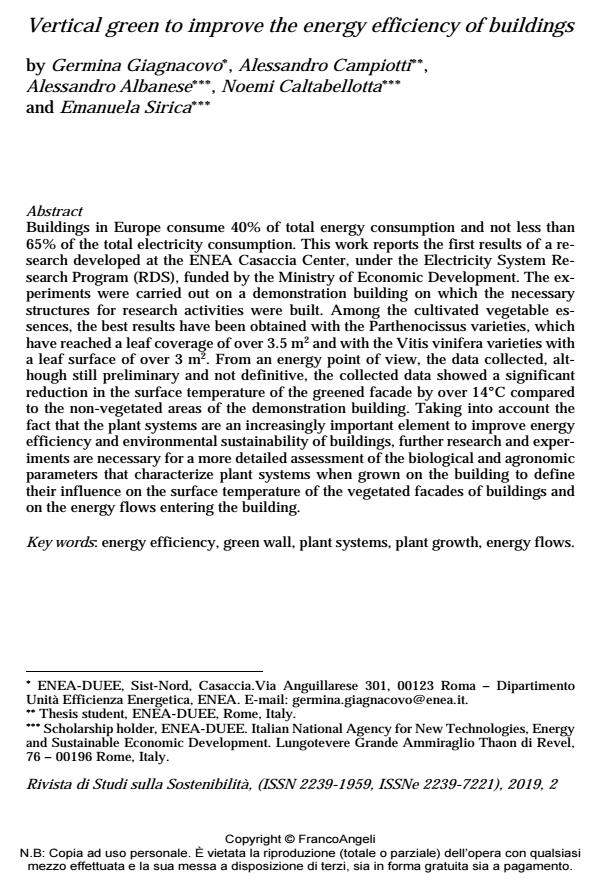Vertical green to improve the energy efficiency of buildings
Journal title RIVISTA DI STUDI SULLA SOSTENIBILITA'
Author/s Germina Giagnacovo, Alessandro Campiotti, Alessandro Albanese Ginammi, Noemi Caltabellotta, Emanuela Sirica
Publishing Year 2020 Issue 2019/2 Suppl.
Language English Pages 15 P. 45-59 File size 464 KB
DOI 10.3280/RISS2019-002-S1004
DOI is like a bar code for intellectual property: to have more infomation
click here
Below, you can see the article first page
If you want to buy this article in PDF format, you can do it, following the instructions to buy download credits

FrancoAngeli is member of Publishers International Linking Association, Inc (PILA), a not-for-profit association which run the CrossRef service enabling links to and from online scholarly content.
Buildings in Europe consume 40% of total energy consumption and not less than 65% of the total electricity consumption. This work reports the first results of a research developed at the ENEA Casaccia Center, under the Electricity System Research Program (RDS), funded by the Ministry of Economic Development. The experiments were carried out on a demonstration building on which the necessary structures for research activities were built. Among the cultivated vegetable essences, the best results have been obtained with the Parthenocissus varieties, which have reached a leaf coverage of over 3.5 m2 and with the Vitis vinifera varieties with a leaf surface of over 3 m2. From an energy point of view, the data collected, although still preliminary and not definitive, the collected data showed a significant reduction in the surface temperature of the greened facade by over 14°C compared to the non-vegetated areas of the demonstration building. Taking into account the fact that the plant systems are an increasingly important element to improve energy efficiency and environmental sustainability of buildings, further research and experiments are necessary for a more detailed assessment of the biological and agronomic parameters that characterize plant systems when grown on the building to define their influence on the surface temperature of the vegetated facades of buildings and on the energy flows entering the building.
Keywords: Energy efficiency, green wall, plant systems, plant growth, energy flows
Germina Giagnacovo, Alessandro Campiotti, Alessandro Albanese Ginammi, Noemi Caltabellotta, Emanuela Sirica, Vertical green to improve the energy efficiency of buildings in "RIVISTA DI STUDI SULLA SOSTENIBILITA'" 2 Suppl./2019, pp 45-59, DOI: 10.3280/RISS2019-002-S1004